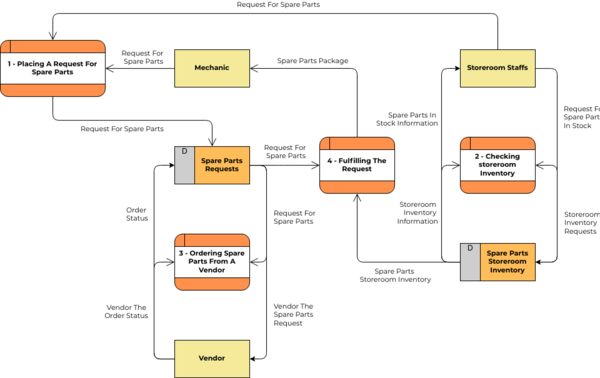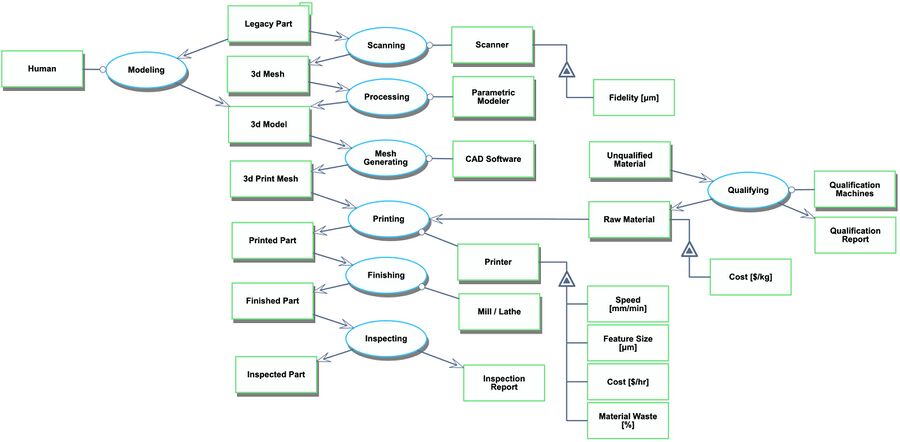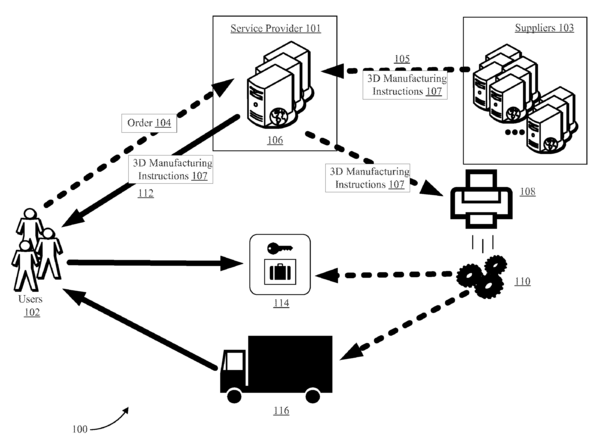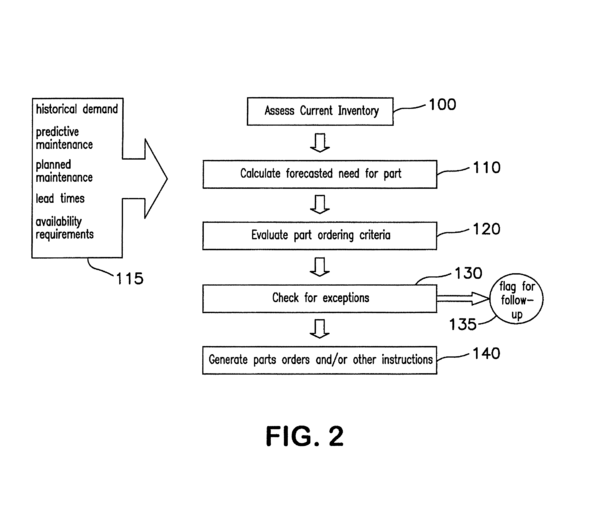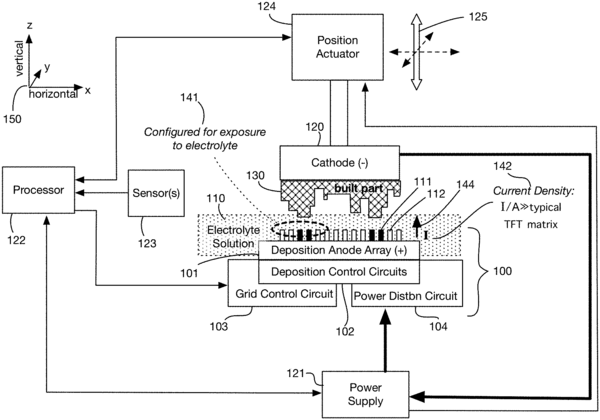On Demand Spare Manufacturing
Roadmap Creators: Robaire Galliath, Alexa Rucks, Ahaana Sarup
Overview
On Demand Spare Manufacturing is the production of spare parts as needed, rather than maintaining a traditional inventory. This approach leverages digital manufacturing technologies such as additive manufacturing, 3D scanning, optimization algorithms, and supply chain logistics. The process involves identifying the need for a spare part, transporting materials for manufacturing, scanning the existing part, processing and generating a mesh, manufacturing the spare part, finishing, inspecting, transporting the spare part to the system, and installing the replacement part.
Technology Focus: Metallic 3D Printing
While many additive manufacturing technologies were initially developed for polymers and resins, they have modern applications in metallic additive manufacturing. At its core, additive manufacturing involves adding material layers repeatedly until a 2D or 3D object is formed. This roadmap will focus only on metallic applications and their relationship to managing spare part inventory within a target company’s supply chain. Unless clearly defined, we will use powder bed fusion as our default 3D printing technology. Main Categories of Metallic 3D Printing Technology
- Powder Bed Fusion (PBF): Includes technologies like Selective Laser Melting (SLM) and Direct Metal Laser Sintering (DMLS). These methods involve spreading a thin layer of metal powder over a build platform and selectively melting it with a laser or electron beam.
- Direct Energy Deposition (DED): Technologies such as Laser Engineering Net Shape (LENS) and Electron Beam Additive Manufacturing (EBAM) use focused thermal energy to melt materials as they are deposited.
- Binder Jetting: A binding agent is selectively deposited onto a powder bed, bonding the powder particles together. The part is then cured and sintered to achieve its final properties.
- Material Extrusion: Includes technologies like Metal Fused Filament Fabrication (FFF), where metal filaments are extruded through a heated nozzle and deposited layer by layer. The printed part is then sintered to remove the binder and fuse the metal particles.
- Sheet Lamination: Involves stacking and bonding sheets of metal, which are then cut to shape using a laser or another cutting tool. Ultrasonic Additive Manufacturing (UAM) is a common example.
Powder Bed Fusion Background
Powder bed fusion processes work by spreading a thin layer of metallic powder over a build plate that is subjected to energy from a laser and fused into a solid layer of material. The entire process takes place in an inert chamber, commonly argon gas, that enables the quick removal of produced gases. The process produces a better surface finish, higher resolutions, and lower rate of defects than other printing processes. The ability to control powder deposition, powder homogeneity, and the rate of gas flow off the part surface enable the higher resolution and lower defect rate.
There are a few key drawbacks to this printing technology. The size of the printed part is limited to the size of the base plate that will fit in the controlled environment. The material powder handling requires proper storage and high-quality control to maintain homogeneity in the powder. Certain metal chemistries, such as carbon steel, are more prone to oxidation due to the increased surface area of the metallic powders and therefore are not good candidates for PBF. In the field, this may mean having to consider alloying-up to a more expensive metal chemistry and additional engineering review before a part can be approved for printing.
Current State of Spare Part Manufacturing
Traditionally, when a part breaks or is retired, the inventory is checked for spares. If no spares are available, drawings are created or found, sent out to suppliers, and quoted for replacement. This process can lead to procurement delays due to long lead times for OEMs to manufacture a part and time lost to redesign.
When evaluating a spare part inventory, there are many key decision points that need to be evaluated. Cost, speed of manufacturing, and technical requirements are common considerations when deciding between traditional or additive processes. Evaluating a spare part inventory involves several key steps to ensure efficiency and reliability. First, conduct a thorough inventory assessment to identify critical components that are prone to failure. Prioritize these essential parts based on their impact on operations. Next, evaluate the feasibility of using 3D printing for these parts, considering factors like material compatibility and cost savings. Create a digital inventory and develop accurate CAD models for the parts to be 3D printed. Select appropriate materials and printers that meet the mechanical and environmental requirements.
Integration of 3D Printing in Spare Part Manufacturing
3D printing fits into the current manufacturing landscape by offering several advantages:
- Customization: Ability to produce customized parts on demand without the need for expensive tooling.
- Reduced Lead Times: Faster production times compared to traditional manufacturing methods, especially for complex or low-volume parts.
- Inventory Reduction: Minimizes the need for large inventories, reducing storage costs and waste.
- Complex Geometries: Enables the creation of complex geometries that are difficult or impossible to achieve with traditional manufacturing.
Challenges and Future Prospects
Despite its advantages, metallic additive manufacturing faces challenges such as high initial costs, material limitations, and the need for post-processing. However, ongoing advancements in technology and materials are expected to address these issues, making 3D printing a more viable option for spare part manufacturing in the future. In summary, metallic additive manufacturing for spare parts represents a significant shift from traditional inventory-based approaches to a more flexible, on-demand production model. As technology continues to evolve, it is poised to play an increasingly important role in the manufacturing landscape.
Design Structure Matrix
The DSM below shows how an On Demand Spare Parting roadmap would relate to a company's roadmaps in other areas that enable on demand spare parting and its support activities.
Roadmap Model using Object-Process-Methodology (OPM)
The graphic below depicts the different processes by which a need for a spare part is identified. Depending on different factors, such as the industry and risk tolerance, the need for a spare may arise differently. For example, a spare may be needed to replace a component during routinely scheduled maintenance as opposed to a spare that is required because a component failed. In the first case, the need for the spare can be anticipated ahead of time; in the second case, the need arises unexpectedly.
The graphic below depicts the primary objects and processes associated with On Demand Spare Manufacturing. In this model, humans are only identified when they are active participants in the process. Humans are not identified as actors if they are passive participants, such as an operator running a machine.
Figures of Merit
| FOM | Description | Unit | Trend |
|---|---|---|---|
| Turn-Around-Time | Time from need identified to need met | hr | decreasing |
| Cost | Total replacement part cost | $ | decreasing |
| Feature Size | The smallest detail that can be reproduced | μm | constant |
| Lifespan | Replacement part lifespan | year | constant |
| Material Cost | Raw material cost | $/kg | constant |
| Production Cost | Aggregate cost of labor, machine time, etc... | $/hr | decreasing |
| Material Waste | Excess material utilized in the production process | % | decreasing |
| Defect Rate | The fraction of parts produced that are not suitable for use | % | constant |
Strategic Drivers
Positioning vs Competition
Technical Model: Morphological Matrix and Tradespace
A Morphological Matrix is a tool used in engineering and design to explore all possible solutions to a complex problem by breaking it down into its fundamental components and systematically varying each component. This method helps in identifying innovative combinations and configurations that might not be immediately obvious.
Tradespace analysis, on the other hand, involves evaluating different design alternatives based on multiple criteria, such as cost, performance, and risk. By mapping out these alternatives in a tradespace, decision-makers can visualize the trade-offs and make informed choices about which design best meets their objectives. Together, these tools are essential for optimizing design processes and achieving balanced, effective solutions.
Key Publications and Patents
Patent 1: Item Delivery Using 3D Manufacturing On Demand
One patent related to the On Demand Spare Manufacturing technology is patent US-20150052023-A1 for “Item Delivery Using 3D Manufacturing On Demand” by Amazon. This patent describes methods and systems for providing manufactured items to consumers on demand rather than maintaining an inventory. The CPC classification for this patent is G06Q 30/0635 (Processing of requisition or purchase orders). This patent walks through the process of a user requesting an item, 3D manufacturing instructions being associated with the request, a delivery method being determined, a manufacturing machine being selected based on the instructions, the instructions being sent to the manufacturing machine, and delivery instructions being provided. This patent is relevant to on demand spare manufacturing because 3D manufacturing is a prime candidate for delivering the spares on demand as it is a quick and adaptable way to manufacture spares.
Patent 2: Spare Parts Inventory Management (US 7,266,518 B2)
Abstract: A method for managing spare parts and tools for a manufacturing enterprise is disclosed. Historical demand values are statistically analyzed to determine optimal stocking levels for spare parts based upon required availability percentages, parts lead times, and the statistical distribution parts demand levels. Parts stocking decisions can also be based upon planned and preventative maintenance timeframes with such parts ordered on an as-needed basis in accordance with lead times. Spare parts inventory management can utilize an enterprise-wide computer system to integrate parts demand planning with systems used for engineering and other changes to manufacturing processes and facility maintenance systems. The computer system can perform varying degrees of the parts reordering and planning process and automate certain steps while providing for decision of other issues by parts management personnel.
Patent 3: 3D metal printhead assembly method of manufacture Another patent related to On demand Spare part manufacturing is patent US20210102286A1. The 3D metal printhead is manufactured using metal electrodeposition to construct parts. The assembly process involves depositing layers on a backplane that houses control and power circuits. These layers include insulating layers and an anode layer, which contains deposition anodes in contact with the electrolyte to facilitate electrodeposition.
The insulating layers can be made from materials such as silicon nitride or silicon dioxide. The anode layer comprises insoluble conductive materials like platinum group metals and their oxides, highly doped semiconductors, and carbon-based conductors. This anode layer can be deposited using chemical vapor deposition (CVD) or physical vapor deposition (PVD). Alternatively, in some embodiments, the printhead can be assembled by creating a separate anode plane component and then bonding it to the backplane.
Additional References:
- A review of algorithms for filtering the 3d point cloud https://www.sciencedirect.com/science/article/pii/S0923596517300930?casa_token=w78irtDoi-EAAAAA:f_S9h0eUaNfKJpXv8GIcwTe9dTxQayYo9uxAnYgKNLePbSnkrdksc4WN8k1-bfzSyWrD5rA
- A new segmentation method for point cloud data https://www.sciencedirect.com/science/article/pii/S0890695501001201?casa_token=O_F0EzE0AywAAAAA:QIKuDupgIEQlEquf4-p__NJgHAf2ZqjJjddvhu8_ZOJWbewLw-VUVjQ1wt7RMvj4b0CVWcQ
- 3D Point cloud segmentation: A survey https://ieeexplore.ieee.org/abstract/document/6758588?casa_token=C7xAiqIlHn8AAAAA:UpaWGnRKcf4IcEqO514RPtGDw6GZm_8DCXSZ6yLBywJ__-w201WCMvRDKMShirfZ8hRArQ
- G06Q10/06 Resources, workflows, human or project management; Enterprise or organisation planning; Enterprise or organisation modelling
- G06Q10/08 Logistics, e.g. warehousing, loading or distribution; Inventory or stock management
- G06Q10/087 Inventory or stock management, e.g. order filling, procurement or balancing against orders
- 02P90/80 Management or planning

